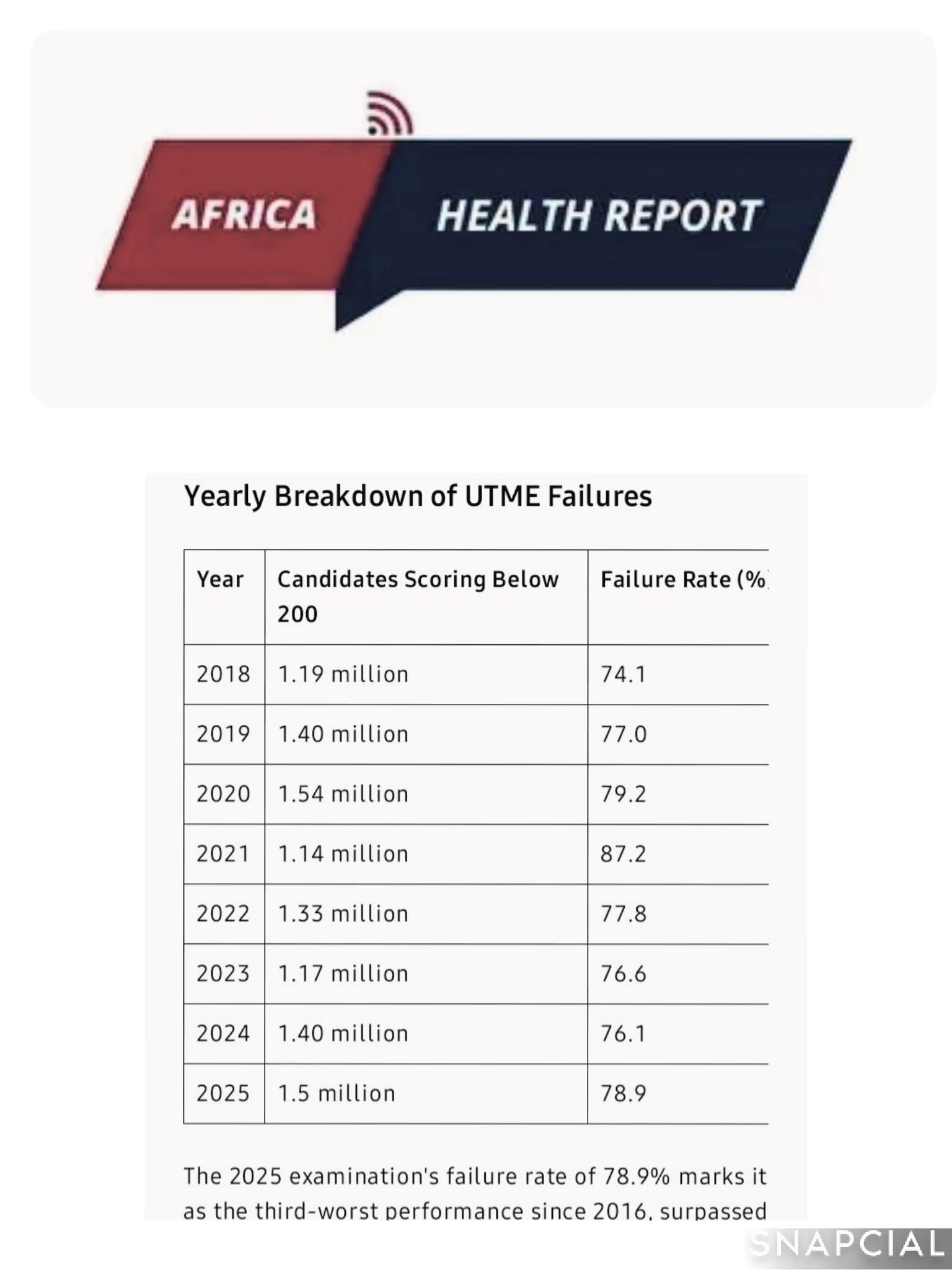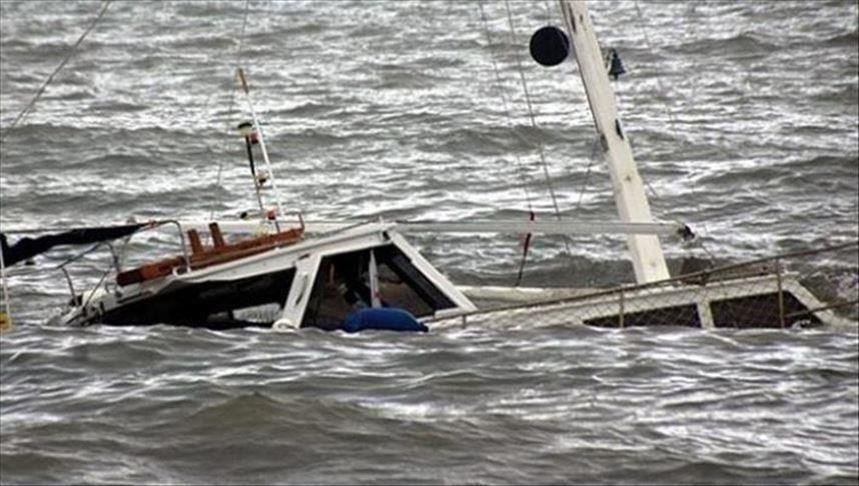…2025 Records 3rd-Worst Performance Since 2016
Hussaini Kafi in Kano
The shocking mass failure in the 2025 Unified Tertiary Matriculation Examination (UTME) results has triggered nationwide protests ever witnessed since the inception of Joint Admissions and Matriculation Board (JAMB), the body statutorily authorised to conduct university admission for candidates.
Africa Health Report AHR, reports that millions of Nigerian families have kicked and out rightly rejected the outcomes of the 2025 exam that has also led some candidates committing suicides.
AHR also reports that following the controversial 2025 UTME results, the Registrar of JAMB Prof. Ishaq
Oloyede publicly admitted to an error in the results the Board released which affected over 379,000 candidates. He wept while explaining the error which he styled “It was a combination of human error and technology”, adding, “We are sincerely sorry”.
Oloyede said the problem, which was caused by one of the two technical service providers for the exercise, went undetected before the results were released. Additionally, the JAMB boss said, He said the Board discovered discrepancies linked to faulty server updates in its Lagos and Owerri zones, which led to the failure to upload candidates’ responses during the first three days of the examination.
“What should have been a moment of joy has changed due to one or two errors,” Oloyede also said.
Miffed by the admission of error in the (UTME), some stakeholders have demanded the resignation of Oloyede.
AHR findings show that the outcry over the 2025 (UTME) results, has revealed that over 78 percent of candidates failed to score 200 marks — the minimum benchmark accepted by most tertiary institutions for admission.
This year’s UTME saw 1.94 million students sit for the nationwide test. Shockingly, only about 400,000 candidates met or surpassed the 200-mark threshold, leaving over 1.54 million students below the line.
With this, the total number of students who have failed the UTME since 2018 has now surpassed 10.6 million, based on cumulative statistics released by the Joint Admissions and Matriculation Board (JAMB) and confirmed through historical performance records.
The 2025 results mark the third-worst UTME performance in the last eight years, surpassed only by the catastrophic outcomes in 2020 and 2021.
Regional Breakdown: A Nation Divided by Education
The mass failure is not uniform across the country. A closer look at the results by geopolitical zones paints a sobering picture of the deep educational inequalities across Nigeria.
In the North-East, comprising states like Borno, Yobe, and Bauchi, the failure rate soared above 85 percent. The region, long battered by insurgency, insecurity, and displacement, struggles with dilapidated schools and a shortage of trained teachers. In Borno and Yobe, for example, many candidates prepared for the UTME while living in internally displaced persons (IDP) camps, with little to no access to digital resources or consistent classroom instruction.
The North-West, Nigeria’s most populous region, including states like Kano, Katsina, and Zamfara, fared only marginally better. Reports from JAMB monitoring officers indicated that nearly 88 percent of candidates in Zamfara failed to score 200 and above. In Jigawa, Kebbi, and parts of rural Kano, the story is similar. Experts link the high failure rate in this zone to early school dropouts, limited access to computer-based test (CBT) training, and poverty.
In the North-Central region — which includes Niger, Benue, and the FCT — performance was mixed. While urban candidates from Abuja and Kwara showed better preparation and results, rural candidates in Benue and Nasarawa dragged the zone’s overall pass rate down. The region’s failure rate averaged between 65 to 75 percent.
The South-West, home to Lagos, Ogun, and Oyo, maintained a comparatively stronger performance. Lagos and Ogun states continued to lead with higher numbers of candidates scoring above 250 marks, thanks to better infrastructure, teacher quality, and a thriving private education sector. Nonetheless, even in this high-performing zone, more than half of candidates (estimated 50–65 percent) still failed to reach the 200-mark cutoff — highlighting the scale of the national crisis.
In the South-East, including Anambra, Imo, and Enugu, students once again proved resilient. With a strong cultural emphasis on academic success, this region recorded one of the lowest failure rates, hovering between 45 to 60 percent. Anambra in particular stood out, with many schools producing candidates who scored between 250 and 300.
The South-South, covering Rivers, Delta, and Edo, showed fluctuating performance. While urban centers in Rivers and Delta posted relatively strong scores, rural parts of Bayelsa and Cross River lagged behind. The average failure rate in the region ranged from 60 to 70 percent, according to aggregated results from JAMB zonal coordinators.



